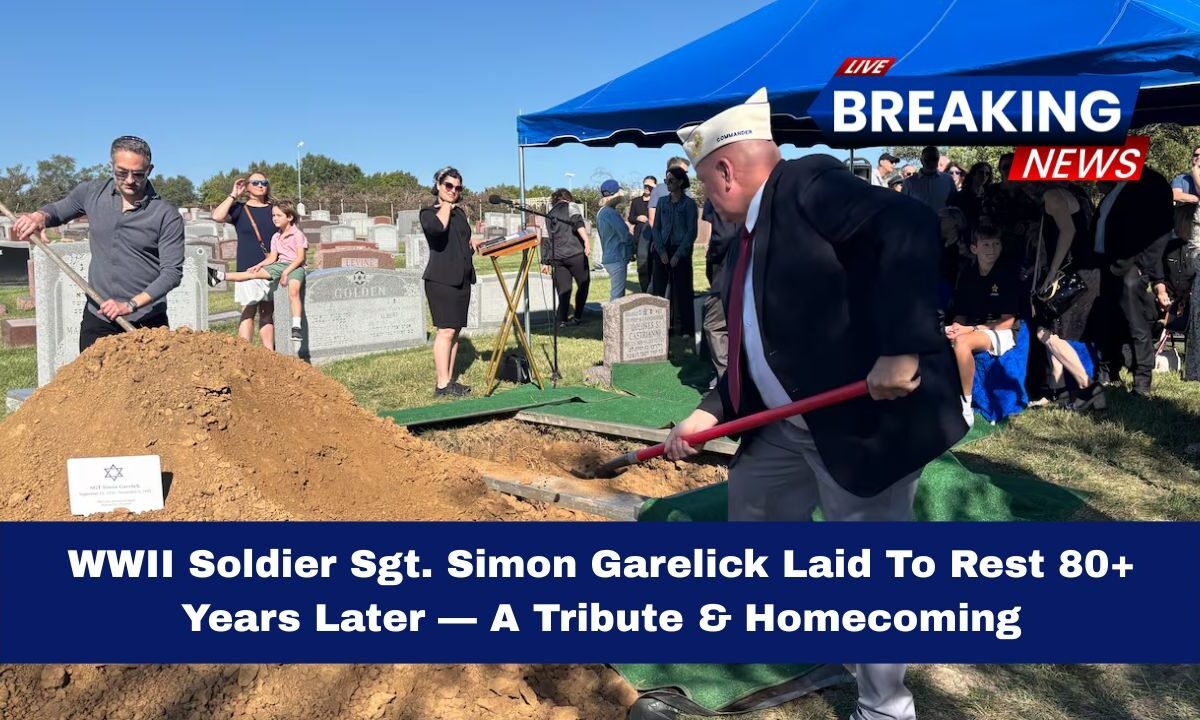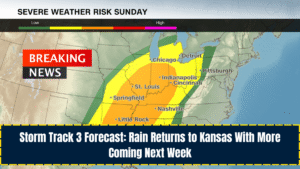After more than eight decades, Sgt. Simon Garelick, a U.S. Army soldier who died during World War II, was finally laid to rest on October 5, 2025, in Sheffield Cemetery, Northeast Kansas City.
What had been a long journey from the battlefields to identification and homecoming became an emotional and solemn moment for family, community, and nation.
This story is more than about a burial — it’s about remembrance, reconciliation, and honoring those who sacrificed.
The Journey Home: From Discovery to Burial
Sgt. Garelick’s case underscores how modern science, perseverance, and respect for history can bring closure even decades after war ends. Below is a summary of key facts:
| Detail | Information |
|---|---|
| Name | Sgt. Simon Garelick |
| Year of Death | 1942 |
| Date of Death | November 4, 1942 |
| Cause of Death | Infection (while in captivity) |
| Captured Location | Philippines (following Japanese invasion) |
| Forced March | Bataan Death March (65 miles) |
| Camp Where Held | Cabanatuan POW camp |
| Date Accounted/Identified | October 7, 2024 |
| Reinternment Date | October 5, 2025 |
| Burial Location | Sheffield Cemetery, Kansas City |
| Age at Death | 22 years old |
| Honors at Burial | Full military honors |
| Family Reaction | Emotional; tears of joy from nieces, relatives |
Life, Capture, and Sacrifice
During the early days of World War II in the Pacific, Japanese forces invaded the Philippines in December 1941.
Many U.S. and Filipino service members were captured, forced to endure the brutal 65-mile Bataan Death March, then confined under harsh conditions in camps like Cabanatuan. Sgt. Garelick was one of those captured and held.
In captivity, he fell ill and succumbed to an infection on November 4, 1942. His remains were interred in a common grave (Common Grave 707) within the camp cemetery.
Over time, many remains were interred in a temporary mausoleum near Manila, and efforts to identify individual soldiers continued for decades.
The Science and Effort of Identification
Repatriating remains after so many years is a delicate, painstaking process. For Sgt. Garelick, investigators combined multiple disciplines:
- Dental and anthropological analysis — to match dental records and bone structures.
- Mitochondrial DNA and genomic sequencing — modern forensic tools to confirm identity.
- Scientists from the Armed Forces Medical Examiner System worked alongside forensic teams.
On October 7, 2024, he was officially accounted for and positively identified. That day marked a moment of closure miles away from the battlefields of the Pacific.
The Reinternment Ceremony
On October 5, 2025, Sgt. Garelick’s body was flown into Kansas City and laid to rest at Sheffield Cemetery. The reinternment service was conducted with full military honors, including ceremonial honors, flag draping, and gun salute.
Dozens of family members attended, including his niece, Carol Brooks, who said tearfully:
“I’m off to tears and they’re tears of joy, not tears of sadness … It means almost everything in the world.”
For many, the ceremony was not just a burial but a homecoming — a moment to say “thank you” and “welcome back” after decades of absence.
Why This Matters
- Historical justice – Many soldiers died anonymously in wartime. Identifying and returning them honors their individual stories.
- Closure for families – Families who carried uncertainty for generations now have a tangible place of remembrance.
- Tribute to sacrifice – The ceremony reminds current and future generations that service and sacrifice should never be forgotten.
- Science & dedication – It highlights how modern forensic techniques can bring resolution to long-standing missing in action cases.
The resting of Sgt. Simon Garelick in October 2025, more than eighty years after his death, is a deeply moving chapter in the ongoing story of how nations honor those who served. This act bridges time, connecting past sacrifices with present gratitude.
Through scientific precision, dedication, and compassion, and with the participation of family and military tradition, a soldier has finally come home. It’s not just an honor and a privilege — it’s a reminder that memories endure, and that every name matters.




